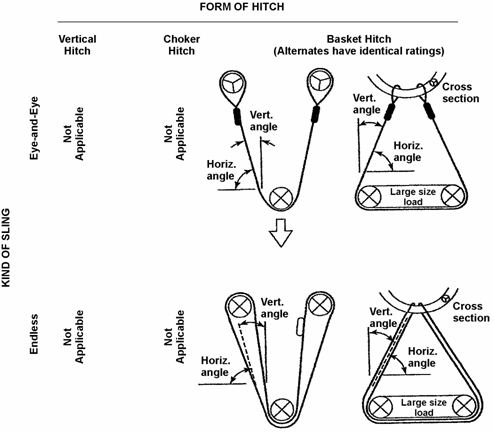
LIFTING SOLUTION
Use and Care
Powertex Roundslings
Copywrited by SUHBO IND CO.,LTD


Identification
Powertex roundsling marked to show by label:
* The rated load for the types of hitches, and
the angle upon which they are based,
* Effective Length(EL) and Safety factor(SF)
* The core material
* The name or trademark of the manufacturer
(Suhbo Ind Co.,Ltd),
* The powertex's code or stock number, and
Operating warning
* Multi checking system if it’s powertex-multi roundsling
Rated Load
Rated loads (capacities) for single-leg vertical,
choker, basket hitches, and Horizontal angle degree
are as shown in Table.
For angles not shown, use the next lower angle or
a qualified person to calculate the rated load.
Rated loads are based on:
Material strength,
Design factor,
Type of hitch,
Angle of loading (see fig.1), and
Diameter of curvature over which the sling is used.

Angle
Do not use horizontal angles less than 30 degrees except as recommended
by the sling manufacturer or a qualified person.

The rated load for a sling in a choker hitch is the value in Table.
provided that the angle of the choke is 120 degrees or more (see Fig.2).
For other synthetic round sling materials and for configurations not shown, use the rated loads provided by the sling manufacturer or a qualified
person.

Fig.1)
Fig.2)
Fitting
Ensure that mechanical fittings used as
part of a synthetic round sling meet the following:
* Materials are compatible with the mechanical
and environmental requirements of the sling,
* Fittings have a rated load at least the same as the round sling,
Fittings have sufficient strength to sustain twice
the rated load of the sling without visible
permanent deformation, and
Surfaces are clean, and sharp edges are removed.

Inspection
Designate a qualified person(From Suhbo)to inspect
slings and attachments each day before use for
damage or defects.
This qualified person also performs additional
periodic inspections where service conditions warrant,
as determined on the basis of:
* Frequency of sling use,
* Severity of service conditions,
* Nature of lifts being made, and
* Experience gained during the service life of
slings used in similar circumstances.
Inspection / Disuse
Make a thorough inspection of slings and attachments.
Items to look for include:




Missing or illegible sling identification,
Acid or caustic burns,
Evidence of heat damage,
Holes, tears, cuts, abrasive wear, or snags, that expose the core yarn,

Where any such damage or deterioration is present,
remove the sling or attachment from service immediately.
Broken or damaged core yarns,
Welding splatter that exposes core yarns,
Knots in the round sling body, except for core yarn knots inside the cover,
Discoloration and brittle or stiff areas on any part of the sling,
Pitted, corroded, cracked, bent, twisted, gouged, or broken fittings, and
Other conditions that cause doubt as to the continued use of the sling.



Repair


Repairing/Reconditioning:
Do not use worn or damaged slings or attachments.
Discard or repair them.
Use damaged slings only after they are repaired, reconditioned, and proof tested by
the sling manufacturer or a qualified person
using
Test
1. Proof Test
Before initial use, ensure that all synthetic round slings
incorporating previously used or welded fittings are
proof tested by the manufacturer or a qualified person.
Other new synthetic round slings and fittings need
not be proof tested, although the employer
may require proof testing in purchasing specifications.
2. Breaking Test
For certified the sling, there are different breaking load
as following,
a) ISO , JIS STANDARD
BL = SWL X 6 TIMES
b) EN, S MARK STANDARD
BL = SWL X 7 TIMES
c) IRO STANDARD
BL = SWL X 5 TIMES

